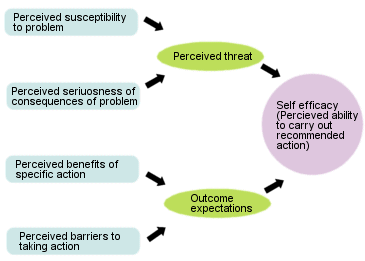Clinical Question
Among black women aged 15-24 years in Illinois (P), does health education and counseling (I) compared to condom distribution (C) lead to increased use of condoms (O) over a period of six months (T)?
Type of Study
The type of study indicated by the PICOT question is a quasi-experimental study because it aims to compare the efficacy of two interventions administered to two non-equivalent sample populations. In this case, the most effective behavioral intervention that will result in the adoption of healthy sexual behavior is marked by increased condom use and engagement in protected sex. However, due to ethical reasons and unlike a true experimental study that is characterized by three elements of control, randomization, and manipulation to attain valid and reliable results, this study will adopt a quasi-experimental study design: a nonequivalent control group design (Crosby, DiClemente, & Salazar, 2006). This study will not have the element of randomization due to the unavailability of matched subjects; some adolescents might have already indulged in sexual activities while others will not have started these activities. Ethically, the study cannot exclude any group based on its nature as a health promotion study.
Theoretical Framework
The theoretical framework that will guide this study is the Health Belief Model (shown below), which was developed with the aim of comprehending people’s failure to adopt disease prevention strategies or screening tests that aid in the timely detection of illnesses (Boston University School of Public Health, 2016).

According to this theory, the belief in the threat of disease alongside the belief in the effectiveness of promoted health behavior is likely to influence a person’s action in adopting the promoted behavior. This model is adapted from psychological and behavioral theory and entails two components:
- Desire to avoid illness or get well in the case one is ill
- Belief that a certain action will prevent or cure illness
Thus, the ultimate decision made by an individual is dependent on the benefits and barriers associated with healthy behavior.
Planned Intervention and Measuring Tools
The planned intervention is health education and counseling, and it will be compared with condom distribution. The intervention will be administered to two groups, and outcome measures will be compared between the two groups; hence, paired t-tests will be used. I will develop a questionnaire to aid in the assessment of the variables.
Pilot Test: Reliability and Validity
I will conduct a pilot test by selecting a population with similar characteristics as the sample population. However, this population will be selected from another region, and both internal and external reliability will be determined by Cronbach alpha and Pearson correlation, respectively (Deniz & Alsaffar, 2013). The opinion of the faculty and supervisor will help to determine the validity of the questionnaire on the basis of assessment by experts.
Measuring Change
This is a quasi-experiment that will utilize a pre- and post-test approach to aid in determining change. Pre-test data will be compared with post-test data to determine the change.
Sampling Procedure
Proportional quota sampling will be used to divide the sample population into two groups; one group will be taken through health education and counseling while the other will only get the condoms (Trochim, 2006). This sampling procedure further justifies the reason for this study’s adoption of a quasi-experimental design and not a true experimental one. Baseline characteristics of the two groups, as well as their statistical differences, will be determined as differences might have an influence on the measured outcomes.
Confidentiality
The sampling procedure and anonymity of the study subjects will help to ensure that confidentiality of the study participants is maintained; information will not be revealed to an unauthorized party without the participants’ knowledge.
References
Boston University School of Public Health. (2016). The Health Belief Model. Web.
Crosby, R. A., DiClemente, R. J., & Salazar, l. F. (2006). Research Methods in Health Promotion. San Francisco, CA: Jossey-Bass.
Deniz, M. S., & Alsaffar, A. A. (2013). Assessing the Validity and Reliability of a Questionnaire on Dietary Fibre-related Knowledge in a Turkish Student Population. Journal of Health, Population, and Nutrition, 31(4), 497–503.
Trochim, W. M. (2006). Nonprobability Sampling. Web.